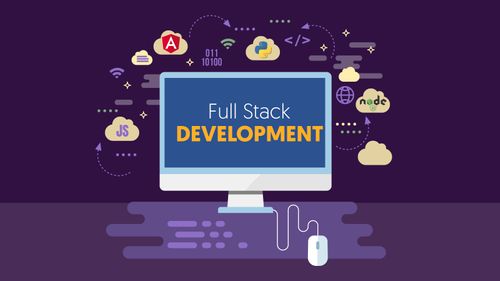Full Stack Developers are computer programmers who are proficient in both front and back-end coding. Their primary responsibilities include designing user interactions on websites, developing servers and databases for website functionality, and coding for mobile platforms.
Full Stack Developers work on all aspects of the product, from its core infrastructure and back end to its custom front-end. Commonly, Full Stack Developers will understand how to work with several languages and databases, which makes them a flexible resource for any organization.
Through this article, we will try to examine in more detail the profile of a Full Stack Developer, the skills they need, how they start their careers, the companies they work for, etc.
Market insights : (Powered by Riminder)
About Riminder :
At Riminder, We provide businesses with an AI-powered infrastructure to assess, score and rank talent pools.
Insights :
Through our analysis, we gathered information about Full Stack Developers' profiles around the globe, in this article we try to present some of the most relevant insights we drew.

There are many skills for a Full Stack Developer to learn, and the list changes almost every year with the fast evolution in Web Development stack.
Here below we try to explore some of the most common skills for Full Stack Developers.
- Javascript (JS): This is one of the most popular programming languages and dominant web development technology. it is used to power almost every popular web page on the internet. Primarily intended for front end development, Javascript covers today back end needs for building reliable server apps, making it a mandatory skill for a Full Stack Developer.
- HTML: Hypertext Markup Language is the standard markup language for creating web pages and web applications. With Cascading Style Sheets (CSS) and JavaScript, it forms a triad of cornerstone technologies for the World Wide Web. Full Stack Developers, by definition, have to be proficient in HTML.
- CSS: Cascading Style Sheets is a style sheet language used for describing the presentation of a document written in a markup language like HTML. This language, as we mentioned before, is one of the three cornerstones of web development. It goes hand in hand with HTML as it allows for user friendly design and display that are not covered by HTML. Full Stack Developers are bound to master it early in their career path.
- JQuery: A JavaScript library that simplifies HTML DOM tree traversal and manipulation, as well as event handling, CSS animation, and Ajax. JQuery is the most widely deployed JavaScript library by a large margin. It circumvents the heavy coding patterns that the original javascript requires and is an essential skill to have as a Full Stack Developer.
- Java: it's a general-purpose computer programming language that is concurrent, class-based, object-oriented, and specifically designed to have as few implementation dependencies as possible. This language is not as needed as the first three, but it is widely used by Full Stack Developers as a server-side programming language.
- PHP: Hypertext Preprocessor (or simply PHP) is a server-side scripting language designed for web development. PHP code may be embedded into HTML code, or it can be used in combination with various web template systems, web content management systems, and web frameworks. This language still runs the vast majority of web pages (around 80%) which makes it a must-have skill for every good Full Stack Developer.
- SQL: It's a standardized query language for requesting and managing information held in a relational database management system (RDBMS). It is particularly useful in handling structured data where there are relations between different entities/variables of the data. Almost all web applications require the capabilities to store data and access it later, this is why a Full Stack Developer should have an understanding of how to build and manipulate data using SQL.
- Python: It's an interpreted, high-level, general-purpose programming language. Python code interacts with code written in other languages such as JavaScript to provide a complete web stack. Although Full Stack Developers don't usually master this programming language, it is growing fast and being used by even more web pages. Python has become a good web development environment for small and medium-sized projects and its web frameworks like Django and Flask are becoming popular for supporting Full Stack Developers in the design and maintenance of complex web applications.
- AngularJS: A JavaScript-based front-end web framework maintained to address many of the challenges encountered in developing single-page applications. Today Angular has become one of the most popular frameworks for building single-page web applications and proficiency in this language is one of the most requested skills for Full Stack Developers.
After going through the most relevant skills currently for Full Stack Developers, let's see what companies offer the most paid Full Stack Developers paths.
Through our analysis, we created the chart below ranking the top 10 companies for Full Stack developers.

Now it's time to take a look at the early beginnings of Full Stack Developers and see how they kicked off their careers. As expected, our analysis revealed that all these profiles start their professional career in Software and Web Development.
Below we present some of their most common first job titles.


